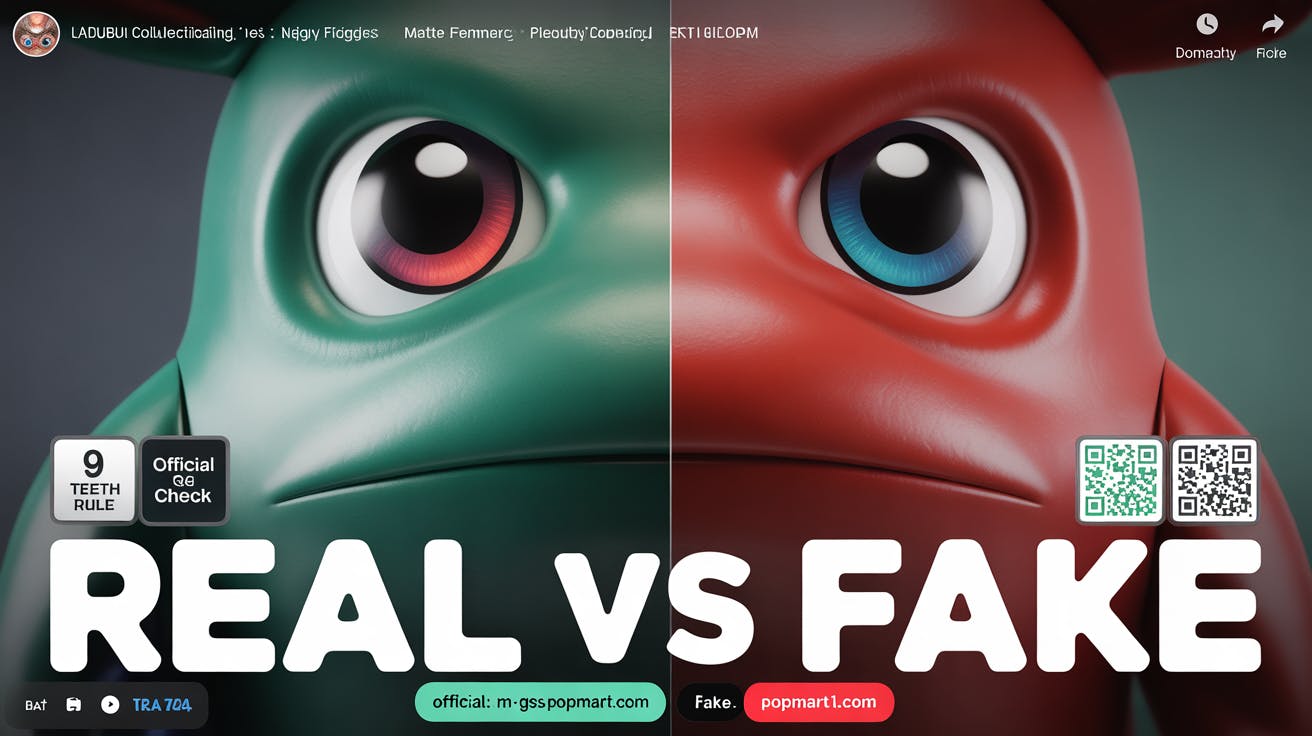Labubu Authenticity Guide: Pop Mart QR Anti‑Fake + AI Checker
Labubu have become a global phenomenon: where there’s hype, fakes follow. This practical guide, based on field experience and verifiable technical cues, walks you step by step to tell originals from the “Lafufu” knockoffs.
You’ll see what to check on the box, tags, figures, and plush, how to use Pop Mart’s official anti-counterfeit codes, and when a deal that seems too good to be true… is a fake (as also noted in Pop Mart’s FAQs).
Plus, I’ll show how the startup Hoken Tech is testing an AI model for authentication from photos and videos, with an embedded demo ready to use.
Context: why fake Labubu proliferate
If you collect, you know that thrill: the latest series drop, stock gone in minutes, prices spiking. The mix of sky-high demand and limited supply is perfect ground for fakes, especially on marketplaces and social platforms.
For collectors, the risks go beyond disappointment: wasted money, poor quality, potentially non-compliant materials, and damage to brand trust. Counterfeit supply chains are now fast and digital, with targeted ads and rapid delivery.
Globally, counterfeiting is a massive market: in 2021, trade in fake goods reached about USD 467 billion (2.3% of global imports, OECD source), and a growing share travels via small parcels and postal services — channels that are hard to inspect at scale.
The most reliable authenticity signals (packaging and codes)
Hologram and print: on originals, the security hologram and logos are crisp, with real depth when you tilt the box; on fakes the effect is flat, edges “bleed,” and colors are overly saturated or inconsistent.
QR and official verification: Pop Mart offers a self-service check. Scan the box or tag QR to access the official page, then follow the procedure: the system returns the authenticity result; repeated checks on the same code are a red flag.
Box QR code, real vs fake Layout consistency: on legitimate items, fonts and alignments are precise, no typos; fakes show typographical errors, uneven edges, and glossy print where it should be matte. Collector guides reinforce these patterns with real examples.
Plush label, real vs fake Pro tip: always compare your box with an official Pop Mart or trusted retailer photo in natural light; micro-defects pop out immediately.
The product: figures and plush — what to look for
Figures (vinyl/PVC/ABS): originals have a uniform, clean finish; eyes are glossy, centered, and precisely set; paint transitions are sharp, with no bleeding.
Facial details: count the teeth (originals have only 9) and observe the definition of each feature (originals maintain consistent sculpt and symmetry); fakes often get the count, spacing, and depth wrong and show micro-smearing on lip/eye edges.
Plush: original fur is dense and soft, filling is balanced, seams are regular and symmetrical, tags are legible and error-free; in fakes the hand feel is “crunchy,” hairs look plasticky and shiny, and tag fonts are imprecise.
Light/angle test: shoot macro at 45° on eyes and painted edges; on fakes you’ll see “steps” and irregularities that the naked eye might miss. Specialist retailers’ checklists are useful for quick comparison.
Official digital checks: how to use Pop Mart’s system
3-step process: choose the method, access the verification page via the official QR/link, and get the result. Simple, but it’s crucial to ensure the URL is truly Pop Mart and to complete all steps through to the result.
real: https://m-gss.popmart.com/1117#/pages/antiFakeCode?f=&t=
fake: https://fwsy.popmart1.com/
Practical tips: if scanning the QR is difficult, use a sharp photo or enter the code manually; device and lighting matter — prefer diffuse lighting. Short videos and guides show each step on a smartphone.
Risk signals: QR that leads to non-official domains, requests for unusual personal data, a result indicating repeated verifications on a product sold as “new.” In such cases, pause the purchase or open an immediate dispute.
Comparison table: original vs fake (practical cues)
Statistics and evidence
Scale of the phenomenon: in 2021, global trade in counterfeit goods was estimated at about USD 467 billion, equal to 2.3% of world imports; the patterns remain stable and span more and more categories, including toys.
Distribution channels: counterfeiters exploit e-commerce and light shipping; a very high share of seizures involves postal packages and small parcels, which more easily evade systematic checks.
Implications: the rise of fakes erodes consumer trust, distorts the collectibles market, and increases safety risk due to non-compliant materials.
Safe buying tips and what to do if you suspect a fake
Buy only from Pop Mart and verified retailers; be wary of steep discounts or “guaranteed chasers” on blind boxes (by definition you don’t choose the character).
Always complete the official verification (QR + procedure) and save a dated screenshot of the result; a “re-verified” code on a product sold as new is a red flag.
If you suspect a fake: document with macros and video of the tilted hologram, save the verification page URL, contact the seller for return/dispute, report to the platform and — if you paid electronically — consider a chargeback.
For secondhand deals: cross-check traceability (origin, receipt, first verification history) with physical quality; when the price is far below market, the risk skyrockets.
Text article was translated from my Italian text, using ChatGPT 5 Pro model (sorry my English is bad so i need tools to translate it better)
Image generated by ChatGPT 5 Pro, this is the prompt used:
- Imagery: Split-screen macros. Left = authentic: glossy centered eyes, sharp paint edges, matte box, deep 3D hologram. Right = counterfeit: paint bleed, asymmetry, overly glossy box, flat hologram.
- Text: REAL vs FAKE
- Badges: 9 TEETH RULE, OFFICIAL QR CHECK
- Colors: Emerald/teal vs red


